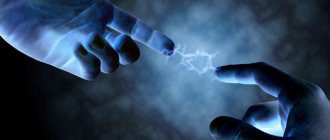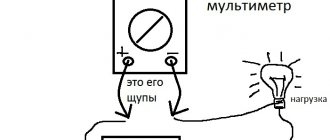Electricity or electric current is a directionally moving stream of charged particles. Electricity also refers to the energy obtained as a result of this movement, and the illumination obtained by using this energy.
One of the most significant achievements of civilization is the production and use of electricity . The scientific and technological breakthrough that took place in the mid-19th century was impossible without the widespread use of electricity. Without it, the existence of the modern world is unthinkable. It is used in all fields of technology and science.
The use of electricity has positive and negative sides, like any phenomenon of scientific and technological progress.
Pros of electricity
- Electricity is accumulated and stored . This allows for uninterrupted power supply to populated areas.
- Converted into other types of energy . Mechanical, thermal, and light energy can be obtained from electrical energy.
- Transmitted over long distances . Power lines allow energy to be transferred to places far removed from where it is produced.
- Widely used in various fields of activity , from a simple light bulb in the entrance to a spaceship.
- Electric motors are environmentally friendly . Their operation does not destroy the Earth's ozone layer. There are no harmful emissions into the atmosphere or waste that pollutes the environment.
- Devices and mechanisms that run on electricity are easy to operate .
- Electricity is cheaper than other types of energy .
- It is possible to generate from renewable sources , such as water, wind, and sea tides.
New ways to produce electricity are emerging . Solar, wind, tidal energy are renewable, limitless resources.
Electricity is obtained by recycling and recycling waste, which allows us to solve two global problems at once.
There are unusual projects . Electricity production by processing nut shells is planned in New Zealand. American scientists are considering the possibility of using live termites. When eating paper, each insect releases a small amount of energy, which is easily converted into electricity. The search for energy sources continues.
Electricity improves the quality of life . It becomes more comfortable and convenient. Even 100 years ago, people could not imagine the reality that surrounds us. Hard physical labor is gradually becoming a thing of the past.
But there are negative aspects that are inevitable when using electricity. They are quite numerous. You need to know about them.
Minuses
- The capacity of the power supplies is insufficient . It is impossible to accumulate energy in industrial quantities and store it for a long time. If you take all the batteries that are on Earth, they will only last 10 minutes to meet the world's electricity needs.
- The construction and operation of power plants of various types disrupt the ecological balance .
- Electromagnetic fields around high-voltage power lines, television and radio repeaters, and cellular transmitting antennas have a negative impact on humans and the environment.
- The risk of domestic injuries is increasing.
- Accidents, fires, and short circuits occur due to faulty electrical wiring
- The negative impact of electromagnetic radiation from household appliances on living organisms .
- The decrease in motor activity of city residents caused by the operation of machines, mechanisms and devices powered by electrical energy is alarming This threatens serious illnesses for entire generations of earthlings.
- Electricity is used to kill people (electrocution) and animals (slaughterhouses).
Environmental pollution is the most negative consequence of electricity production. The boilers of thermal power plants burn fossil fuels. This leads to the release of harmful substances into the air. Due to the free release of unused energy, thermal pollution occurs. Acid rain and the accumulation of greenhouse gases are dangerous for nearby populated areas.
Hydroelectric power stations, hydroelectric power stations, the safest . They do not pollute the environment. But when reservoirs are created, vast areas are flooded. These are farmlands, forests, settlements. The soil along the banks of reservoirs becomes swampy. The fish die due to disruption of the usual temperature regime.
Radioactive waste from nuclear power plant operations requires complex processing procedures . Waste disposal sites emit radiation. This makes the areas around them unusable.
The construction of tidal stations is destroying the coastline. The balance of fresh and salt water is disrupted.
But this is the harm and benefit that comes from the production and use of electricity on a global, worldwide scale. How to use electricity correctly in everyday life?
Features of the effect of electric current on the human body
Electric current, passing through the human body, predetermines the transformation of electrical energy absorbed by the body into other types and causes thermal, electrolytic, mechanical and biological effects.
The most complex is the biological effect, which is unique to living organisms. Any conductor has thermal and electrolytic effects.
The thermal effect of electric current is characterized by heating of tissues up to the point of burns.
Statistics show that burns account for more than half of all electrical injuries. They are treatable because they penetrate deeply into the tissues of the body. In electrical installations with voltages up to 1 kV, contact burns are most often observed when the body comes into contact with live parts.
Burns are possible when a current of more than 1A passes through the human body. Only with a high current, tissues are affected, heated to a temperature of 60-700C and higher, at which the protein coagulates and burns appear.
In almost all cases, when a person is included in an electrical circuit on his body and in places of contact, “electrical signs” of gray-yellow color, round or oval, are observed.
In case of burns from the action of an electric arc, metallization of the skin with metal particles from the arc plasma is possible. The affected area of the skin becomes hard and takes on the color of metal salts stuck in the skin.
The electrolytic effect of current is expressed in the decomposition of organic liquid, including blood, which is an electrolyte, and in the disruption of its physical and chemical composition.
The biological effect of current manifests itself through irritation and excitation of living tissues of the body, as well as disruption of internal biological processes.
The mechanical effect of current leads to rupture of body tissue as a result of electrodynamic action, as well as an instant explosive connection with tissue fluid and blood.
Electric current or arcing may cause electric shock. Electrical injuries are conventionally divided into general and local. Local injuries include burns, electrical signs, electroplating of the skin, mechanical injuries, and electrophthalmia (inflammation of the eyes resulting from exposure to ultraviolet rays from an electrical arc).
General electrical injuries are also called electric shock. This is the most dangerous type of electric shock. Electric shocks cause excitation of living tissues, convulsive muscle contractions, paralysis of the muscles of the musculoskeletal system, muscles of the chest (respiratory), muscles of the ventricles of the heart.
The effect of electric current on living tissue, in contrast to the action of other material factors (steam, chemicals, radiation, etc.), has a unique and versatile character. Passing through the human body, electric current has thermal, electrolytic and mechanical effects. These physical and chemical processes are inherent in both living and inanimate matter. At the same time, the electric current also performs a biological effect, which is a specific process characteristic only of living tissue:
- The thermal effect of current is manifested in burns of individual parts of the body, heating to a high temperature of blood vessels, nerves, heart, brain and other organs located in the path of the current, which causes serious functional disorders in them;
- the electrolytic effect of current manifests itself in the decomposition of organic liquids, including blood, which is accompanied by significant disturbances in their physicochemical composition;
- The mechanical (dynamic) effect of the current manifests itself in rupture, delamination and other damage to various tissues of the body, including muscle tissue, walls of blood vessels, vessels of pulmonary tissue, etc.;
- The biological effect of current is manifested in irritation and excitation of living tissues of the body, as well as in disruption of internal bioelectric processes that occur during the normal functioning of the body.
An electric current passing through the body irritates living tissues, causing a response in them - excitation, which is one of the main physiological processes and is characterized by the fact that living formations move from a state of relative physiological rest to a state of specific activity. them.
It is necessary to consider the types of electrical injuries and causes of death from electric shock.
An electrical injury is an injury caused by an electric shock or arc. Depending on the consequences of electrical injuries, they are conventionally divided into two types: local electrical injuries, when local damage to the body occurs, and general electrical injuries (electric shock), when the entire body is affected as a result of a malfunction of the system. normal activity of vital organs and systems.
Typical local electrical injuries are electrical burns, electrical signs, skin metallization, mechanical injuries, and electrophthalmos.
Electrical marks (electrical marks) are gray or pale yellow callus-like spots on the surface of the skin where they come into contact with conductive parts.
Skin metallization is the penetration of tiny metal particles into the upper layers of the skin, which melts as a result of the action of an electric arc. This damage usually occurs on exposed parts of the body - the arms and face. The damaged area of the skin becomes hard and rough, but in a relatively short time it regains its previous appearance and elasticity.
Electrophthalmia is eye damage caused by exposure to ultraviolet radiation from an electrical arc.
The most dangerous type of electric shock is electric shock, which in most cases (about 80%, including mixed injuries) leads to the death of the victim.
Electric shock is the stimulation of living tissues of the body by electric current, accompanied by convulsive muscle contraction. Depending on the consequences of the injury, electric shock can be divided into four degrees:
- convulsive muscle contractions without loss of consciousness;
- convulsive muscle contraction with loss of consciousness, but with preservation of breathing and heart function;
- loss of consciousness and disturbances in cardiac activity or breathing (or both);
- clinical death.
Clinical death is a transition period from life to death, which begins from the moment the heart and lungs stop and lasts 6-8 minutes until the death of brain cells. After this, biological death occurs, as a result of which biological processes in the cells and tissues of the body cease and protein structures collapse.
Daily use of electricity
- Environmental responsibility is not an empty phrase. Careful use of electricity is the responsibility of every modern person. A third of the electricity consumed in everyday life is wasted because non-working appliances remain plugged in. Significant savings can be achieved by simply completely de-energizing household appliances.
- Electromagnetic radiation is harmful to health . You should not be near working washing machines, refrigerators and microwave ovens. Radiation from a mobile phone is strongest when dialing and connecting to a subscriber. At this time, it is better to keep the tube from the head at a distance of at least 20 cm.
- Radiation is also dangerous near power lines . You shouldn't linger around them.
- Most electrical accidents occur due to faulty wiring . The insulation of conductive parts deteriorates from mechanical damage, weathering, and aging. Correct wiring will help avoid fires, short circuits and accidents.
The dangerous properties of electricity occur because it heats the conductor through which the current passes. When working with electricity, we must not forget about safety precautions.
- Grounding in the house must be mandatory . When determining the voltage in the network, you should use special instruments.
- It is necessary to monitor the serviceability of household appliances and sockets . De-energize them at the slightest suspicion of a malfunction.
The degree of exposure to current when passing through the human body
There are three degrees of exposure to current when passing through the human body (alternating current):
- palpable current - the occurrence of painful sensations (up to 0-1.5 mA);
- current without release - convulsions and pain, heavy breathing (10-15 mA);
- fibrillation current - cardiac fibrillation with a current duration of 2-3 s, respiratory paralysis (90-100 mA).
Alternating current is more dangerous than direct current. With a current of 20-25 mA, the fingers convulsively squeeze the object taken in the hand, which is under tension, the muscles of the forearm are paralyzed, and the person cannot free himself from the action of the current. Many have paralyzed vocal cords: they cannot call for help.
What matters is the current through the body and especially the places where the current enters and exits. Of the possible paths of current passing through the human body, the most dangerous is the one in which the brain (head-arms, head-legs), heart and lungs (arms-legs) are affected. But there are cases of fatal electric shock when the current did not pass through the heart or lungs at all, but went, for example, through a finger or through two points on the shin. This is due to the presence of particularly vulnerable points on the human body, which are used in acupuncture treatment.
In the event of an electric shock, first of all, it is necessary to provide first aid to the victim.











